Now & New
Taishaku Gorge Kosuibiraki Festival: Dammed Good Times in Bihoku
Deep in the mountainous, northern interior of Hiroshima Prefecture lies Taishaku Gorge, one of the Bihoku area’s principal natural tourist attractions. The gorge has a different face for each of the four seasons, with autumn undoubtedly being the most popular. Fiery foliage ignites the forest into a cool inferno of red, orange, and yellow, and shuttle buses sweep tourists from JR Bingo Shobara Station to Upper Taishaku with its scenic trails and then Lower Taishaku overlooking the magnificent Lake Shinryu. In the winter, snow covers the landscape and the boats that travel across the lake come with kotatsu tables so that visitors can stay warm and toasty. Taishaku Gorge becomes awash in greenery come spring and summer, but outside of fall foliage season, the only time when a special bus service is available is on the day of the Taishaku Gorge Kosuibiraki Festival (帝釈峡湖水開き), or literally “Opening of the Lake Waters of Taishaku Gorge,” which precedes Golden Week.
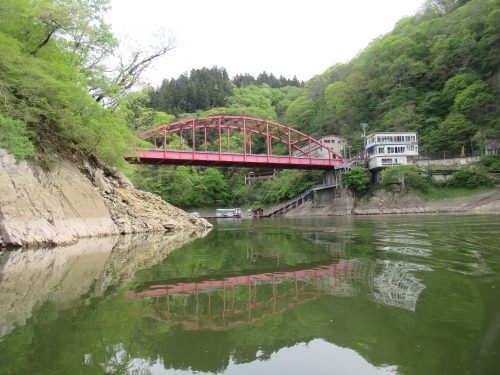
This year, the festival was held on Sunday, the 28th of April, and tickets for this bus can be purchased at the Hiroshima Bus Center well in advance of the actual date. For the bargain price of ¥4,900, prospective tourists get a round-trip ticket on the Taishaku Gorge Liner—which travels between Hiroshima City and Lake Shinryu—a voucher for a souvenir at the boat tour gift shop, and a coupon for a free boat ride on Lake Shinryu. This set deal is a lot cheaper than simply paying for two one-way tickets (¥5,220), and best of all, the tickets and coupons in the set are all valid from April 28th to May 26th, the period during which the Taishaku Gorge Liner runs (though let’s be honest, most of us were gunning for the festival on April 28th).
Springtime at Lake Shinryu
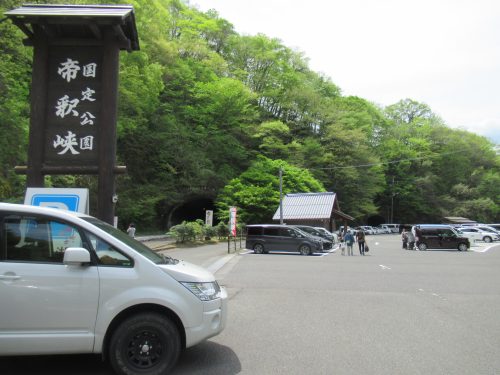
The Taishaku Gorge Liner departed from the Shinkansen exit of Hiroshima Station at 9:30 in the morning and dropped me off at Lower Taishaku’s enormous parking lot at 12:13, just in time for lunch. I followed the other families across the lot and through a white concrete tunnel, where I was met with this panorama of Lake Shinryu dotted with kayakers in the distance.

After a few more paces, I reached the ticket booth for the boat rides and the gift shop I would hit up later for my freebie. As I continued along the road in the direction of the festival site, I came across a store called Sato’s Shop (佐藤商店), which is famous not for its wares, but rather for a tank at the storefront housing a Japanese giant salamander. It’s actually illegal to own this creature nowadays due to it being a vulnerable and protected species, but this shop is so old that it had captive Japanese giant salamanders before the law took effect in the Meiji era. I snapped my photos and continued on my merry way.
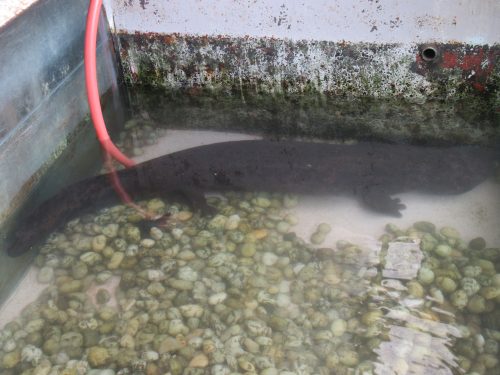
Kosuibiraki Festival Site
Since I was famished, my first thought upon reaching the festival site was to grab a bite to eat. The venue was a big, empty lot with a stage on one end faced by rows upon rows of tables with chairs, all flanked by tents and trucks selling food for the festival goers. I deliberately scanned all my options before deciding on this stall selling sausages: there was one link made of Jinseki Kogen pork (¥300) and a lemon pepper sausage made from Jinseki Kogen wild boar (¥400), but customers can buy both and compare the two for ¥600, which is exactly what I did. The sausages were served on a flimsy Styrofoam plate, and ketchup and mustard were available for diners to add if desired, but there was barely any sauce left in either bottle. I inadvertently made my snack look like a smiley face and took it to go on my short bus ride (more on that later).
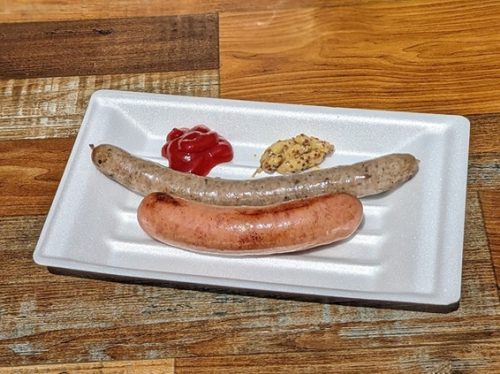
There was a wide variety of entertainment on stage that day, ranging from taiko drumming concerts to kagura plays, and yosakoi dances to talk shows. I was tempted to stick around to catch the entirety of this performance, but my tummy was rumbling, and I had places to go, so this video was as much as I got.
As for the talk show I listened to as I was waiting in line to buy my sausages, the speaker wasn’t from Hiroshima, but did make one astute observation about performing anywhere in this prefecture. One need only to praise the Hiroshima Toyo Carp, and the crowd will automatically go wild. The show was supposed to be funny, but at one point the performer claimed to be the late Shinzo Abe, visiting from Heaven. I didn’t really care for the jokes he made when doing that bit since personally, I thought it was too soon to be making that somber of a reference. Good thing I was getting my food to go; after putting ketchup and mustard on my plate, I dashed for the area where people were lining up to ride a minibus.
Minibus Excursion

During the festival there was a limited-time bus route that took visitors up to a lookout point, traversing a narrow road uphill that is only open to vehicular traffic (i.e. no pedestrians allowed). The bus I took was more of a long, spacious minivan, and I could comfortably eat my pig and boar sausages on the way up. The driver—a skilled motorist who could turn the bus on acute hairpins and deal with opposing traffic on a one-lane road—was also a humorous man who made jokes while taking us uphill. Mere minutes passed before we reached our destination and stepped out of the vehicle for photo opportunities.
I saw some interesting bugs and these cute pink flowers pictured above. In addition, the driver offered to take pictures of us with the verdant Taishaku Gorge in the background. Of course I had him take my photo, but not before I snapped some shots of nothing but nature. According to a nearby sign, we were supposed to be able to see Shinryu Lake below and as far as the dam, but maybe I was at a bad angle because I couldn’t make out anything but the trees.

When we all got our fill of photos and the kiddos were complaining about the heat outdoors, we piled back into the bus and returned down the hill to the festival site, where yosakoi groups and their giant flags had just taken the stage.
The two sausages I had prior to that excursion hardly satiated me, so after getting off the bus I immediately started scoping out eateries again. This time, I went for a food truck called Two Ton (豚豚 – ツートン), which translates to “Pig Pig” or “Two Pigs,” but unlike what the name suggests, this truck specialized in pizzas and crepes. I got myself a corn and mayonnaise pizza (completely devoid of pork), then grabbed an empty seat at a table. The pizza was naturally piping hot, well-seasoned, and had a fragrance so tempting I tore into it right away.

Around this time of day, the crowds from before had largely dissipated and there were vacant seats galore. I thoroughly enjoyed not only the pizza, but also the kagura show on stage and the opportunity to rest after hours of riding transportation and seeing sights. Honestly, if I didn’t have anything else to do, I might have stayed at that table until it was time to go home, but alas, there was still one boat ride (plus the free souvenir) waiting for me so I had to finish up my delicious pizza and hit the road again.
Moment of Joy: My Matsuri Jam
Thankfully, there were still yosakoi performances going on, and who else better to show up than Fukubijin, a renowned troupe from Fukuyama? They have a different dazzling costume every time they perform at festivals all over Hiroshima Prefecture, but their most recognizable aspects are their distinct blue flags and the fact that they always dance the Fukuyama Ondo.
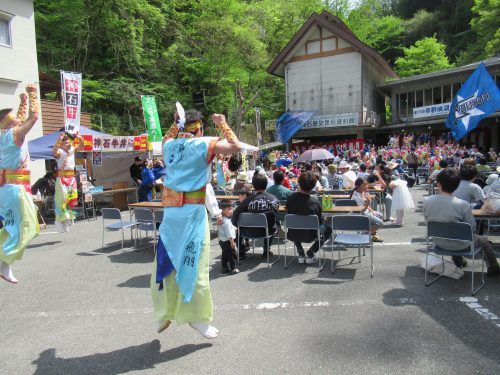
At past festivals where I would watch Fukubijin perform, it was always them on stage and us in the audience facing them head on, but this time, the entire dance troupe surrounded the viewers at their tables while everyone in the venue who knew the words sang and moved along. The immersive yosakoi experience was the highlight of the entertainment that day, and needless to say, no matter where in the prefecture I go for a local festival, I expect Fukubijin to be there and dance the Fukuyama Ondo, my go-to matsuri jam.
Lake Shinryu Dragon Boat Ride
The last item on my agenda was to take a boat ride on Lake Shinryu, but not before exchanging my voucher for my freebie at the gift shop. It was a humble box of milk mochi, which had a long shelf life so I could enjoy it many months later. I then headed down the steps to the pier to board my draconian vessel.
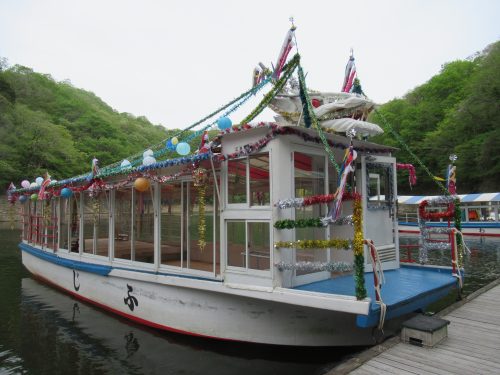
The name Lake Shinryu (神龍湖) literally means “Divine Dragon Lake,” so it only seed apt that the boat was decked out to look like a colorful, glittering dragon in time for the Golden Week holidays. Shortly after we all piled in, the dragon boat set sail for the dam, whose opening is the reason behind this festival. The floor of the interior had cozy tatami mats, and large windows all across both sides meant that every single passenger had a view of the lake on which we floated. On top of that, throughout the ride there was a pre-recorded audio guide that pointed out interesting landmarks on the left and right sides of the boat as we traveled. There are lots of little factoids to be learned (if you understand Japanese) if you listen to the guide, and at one point, passengers’ ears are treated to the Taishaku Ondo, which is a pleasant, old-timey tune befitting of the surrounding atmosphere.
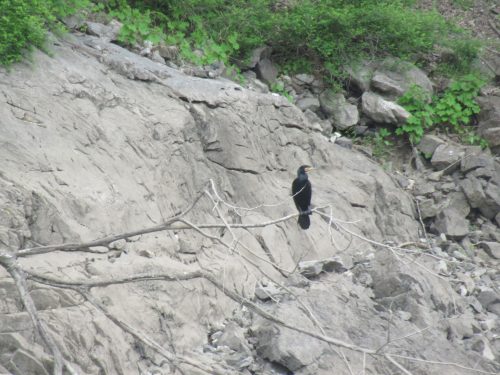
There were interesting rock formations to be seen on either side during the trip, but what was even more of a treat was the occasional bird sighting, and these creatures weren’t exactly small. I for one was thankful for my camera’s zoom capabilities as well as the bird’s patience; I guess the approaching boats don’t startle these guys at all.
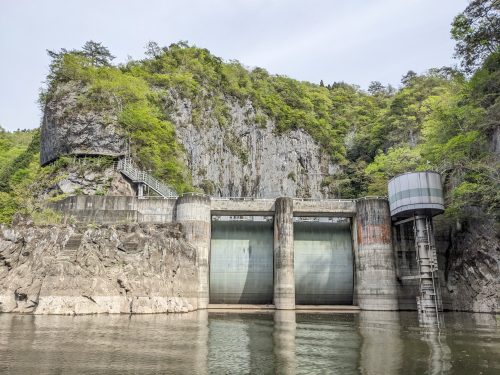
At the end of the boat ride was the Lake Shinryu dam, which in itself isn’t much of a sight, but knowing its role is regulating the lake’s water levels and that the festival celebrates it makes one appreciate this dam a lot more. After this point, our boat turned around and we had the pleasure of seeing all the beautiful sights once again before disembarking. From the pier, I jogged up the stairs and all the way back to the parking lot where I was dropped off the catch the Taishaku Gorge Liner back to Hiroshima City. That bus departed at 4:04 pm and arrived at Hiroshima Station’s Shinkansen exit at approximately 6:53 in the evening.
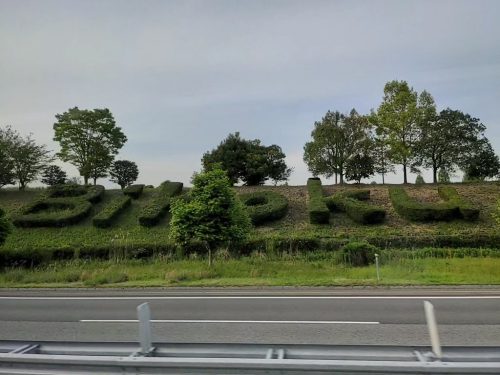
Taishaku Gorge up in Bihoku is truly worth a day trip for those who wish to get to know Hiroshima Prefecture better, and I only wish it were more accessible via public transportation. I had a—dare I say it? —dammed good time at Lake Shinryu that day, and on every Saturday, Sunday, and national holiday up until May 26th, the Taishaku Gorge Liner would shuttle Hiroshimarians and tourists from other parts to the undiscovered gem that is Lake Shinryu. So far, I’ve seen Lower Taishaku in fall, winter, and spring, and hope to someday knock summer off the list as well, if a similar bus service is available. Whether you drive, take a shuttle bus like I did, or just shell out the money for a taxi from JR Bingo Shobara Station, Lake Shinryu and Taishaku Gorge as a whole are sure to amaze you. If possible, try to time your trip with a festival like the Taishaku Gorge Kosuibiraki Festival, because they sure can throw a party that sets the mood for the holidays to come.
Written by the Joy in Hiroshima Team
